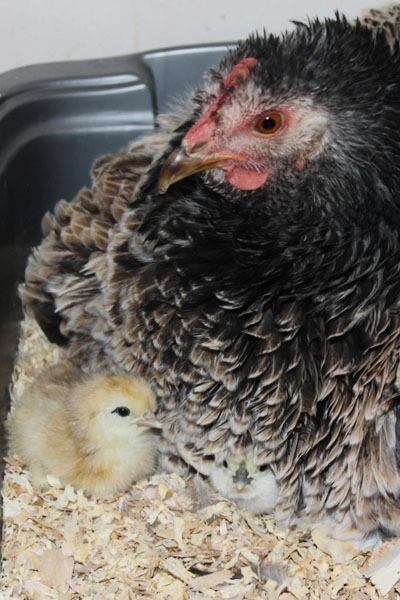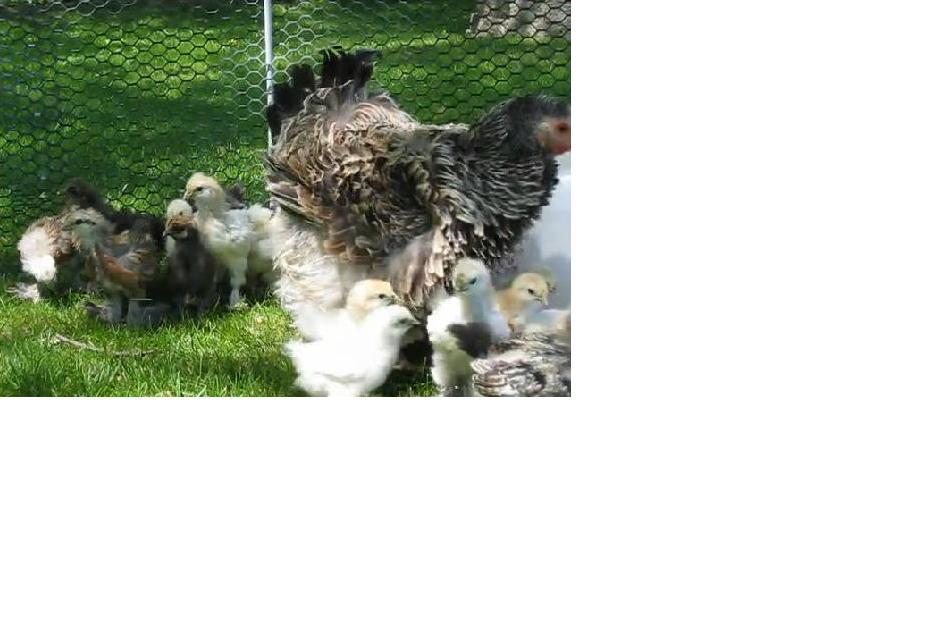- Oct 16, 2012
- 26
- 0
- 22
Anybody want to take a crack at what kinds of genes are involved (and the associated gene symbol) for this bird? I have some of the offspring in this picture and would like to play with some Punnett squares.
The rooster is a pure white silky which I've read is recessive white.
If true, why are so many of the chicks white?
In the frizzle hen, I see colombian influence on the head and tail, but what am I seeing in the body feathers?? The feathers have a very light, maybe white outer edge. Her bloomers seem to be mostly white or light as well. Is this (S)ilver? Is that why so many of the chicks are white?
All we know is that the hen is a frizzle cochin out of Princeton, MN. And she is not my bird so I only know as much as you can see.



The rooster is a pure white silky which I've read is recessive white.
If true, why are so many of the chicks white?
In the frizzle hen, I see colombian influence on the head and tail, but what am I seeing in the body feathers?? The feathers have a very light, maybe white outer edge. Her bloomers seem to be mostly white or light as well. Is this (S)ilver? Is that why so many of the chicks are white?
All we know is that the hen is a frizzle cochin out of Princeton, MN. And she is not my bird so I only know as much as you can see.

